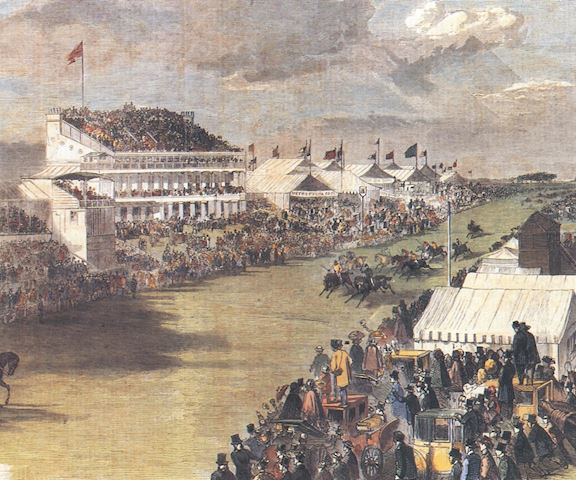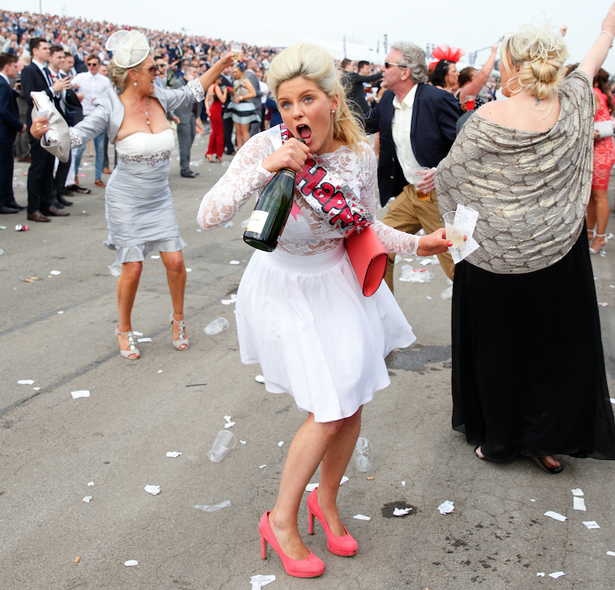Richard Kingscote gave a superb, no-nonsense ride that Lester Piggott himself would have been proud of, leading Desert Crown, the 5-2 favorite, to an astonishing Cazoo Derby victory at Epsom Downs that was never in question from the minute he took the front, with over two furlongs yet to race. Sir Michael Stoute didn’t need to shout his horse home from the stands. Instead, Desert Crown’s 76-year-old trainer hoisted his top hat to celebrate his sixth Classic victory and the emergence of a new champion in the same yard that took Shergar to Epsom 41 years ago.
How Old is Epsom Racecourse? Epsom’s early racing days were in the 1640s, around 374 years ago. In the middle of May 1648, during the Civil War, a royalist convention was organized on Banstead Downs under the pretense of a horse race. Over 600 horses were collected. This massive collection of horses meant that Racing at Epsom had to be a regular and well-attended event for such a covert conference since horseracing was outlawed then.

Following the dissolution of the Commonwealth (1649-60), Charles II attended the first reported race meeting in the Kingdom on March 7, 1661, at Epsom. In May and October 1730, horseracing events on the Downs were frequent, with local nobles providing cups and plates as prizes.
For many years, the Derby was held on a Wednesday or Thursday, and large crowds traveled from London to see the race and related festivities. Throughout the nineteenth and early twentieth centuries, Parliament would be adjourned to let its members attend the racing meeting.
Entertainers such as singers, clowns, and conjurers amused the crowds that came to see the Race in the 1850s, and other types of entertainment were also popular. In the 1870s, steam-powered rides were added to the grounds at Tattenham Corner, and the Fair lasted ten days, attracting hundreds of thousands of people. Derby Day grew less prevalent in the latter part of the twentieth century, and the Race was moved from a Wednesday to a Saturday to increase attendance in 1995.
Epsom Salts & Epsom Downs
In 1618, herdsman Henry Wicker found a water spring northwest of the turnpike road between Epsom and Ashtead, which helped Epsom develop to prominence. Even though local doctors investigated the water, which was supposed to be undrinkable, it took another 12 years for the water’s extremely purgative properties to be recognised – one gallon of water contained 480 grains of calcareous nitre. Epsom Salts retailed for five shillings per ounce at their peak in 1640.
The Derby Stakes was initially run over a mile for 50 guineas on Thursday, May 4, 1780, and was open to three-year-old colts (8st 0lb) and fillies (7st 11lb). Despite winning the coin toss, Sir Charles Bunbury owned the first winner, Diomed, who was a 6-4 favorite. The Derby distance was increased to a mile and a half in 1784.
Epsom Derby – Today’s Race
The Derby Stakes is a Group 1 flat horse race open to three-year-old colts and fillies. It is also known as the Epsom Derby or the Derby. Cazoo currently sponsors it. On the first Saturday of June, it raced over one mile, four furlongs, and six yards at Epsom Downs Racecourse in Surrey (2,420 meters).
It is the most valuable flat horse race in the United Kingdom and the most well-known of the five Classics. It is renowned as the “Blue Riband” of the turf, and horses, trainers, and riders come from all over the globe to participate in this prestigious event.
The Race is the middle leg of the historically significant Triple Crown of British horse racing, preceding the 2000 Guineas and following the St Leger, though winning all three is rarely attempted in the modern era due to changing priorities in Racing and breeding, as well as the demands placed on horses.
Cazoo now supports the Race and seven other Derby Festival events, with their sponsorship beginning in 2021. Investec sponsored the Derby from 2009 until 2020; before, the Race was sponsored by two Global Brands, Ever Ready (1984-94) and Vodafone (1995-2008).
Epsom Downs – The Landlord
The Jockey Club is an essential commercial horse racing organization in the United Kingdom. It owns fifteen of the most prestigious racecourses in the United Kingdom, including the legendary Epsom Downs.
The Jockey Club also owns Aintree, Cheltenham, and Newmarket’s Rowley Mile and July Course. Racing Welfare, a registered charity, is also a company limited by guarantee, with the Jockey Club as its only shareholder. The Royal Charter governs it, and all profits are reinvested in the sport.
Historic, unrivaled, and eternal are three terms punters worldwide use to describe two of the most renowned races on the World horse racing calendar, the Epsom Oaks and the Epsom Derby. From the thrill of the hill to the famed pageantry and sideshows sharing a stage, a new champion has been crowned every two hundred and forty-three years. It is the most watched racing carnival in the world.
The Epsom Derby – An Iconic Race on an Iconic Raceday
The Jockey Club is the United Kingdom’s most prominent commercial horse racing organization. It owns fifteen of Britain’s most renowned racecourses, including the iconic Epsom Downs. Friday, June 2 and Saturday, June 3, 2023, will be the two days that the eyes of the racing World will be on Epsom Downs with the running of the Oaks and the Derby.
The Cazoo Epsom Derby has become one of the most recognisable faces at a world-famous racecourse. It is undoubtedly the oldest and one of the biggest races on the calendar, attracting enormous attention worldwide.
In some runnings, more than a hundred entries are filed for the Race, but unfortunately for the owners and trainers of those equine thoroughbreds, only a quarter will pass the final acceptances to participate in the Great Race on Derby day at the beginning of June. Those who pass the test will have the privilege of running in one of the UK’s most iconic races.

